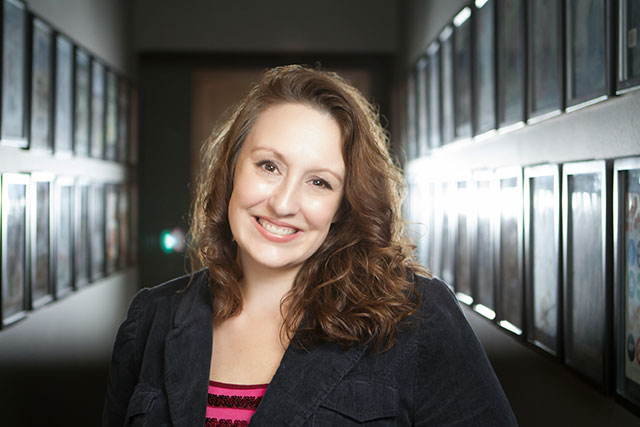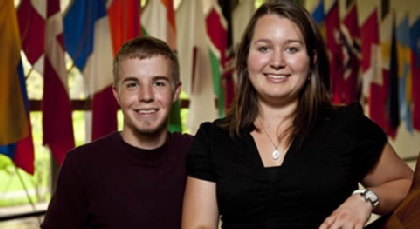Page 72 • (4,659 results in 0.065 seconds)
-

success after another—and perhaps destined by one very early experience: The first article she wrote, on cafeteria lunches, ran in her elementary-school newspaper. “I thought it was so much fun seeing my name in the paper,” Patterson said She picked up reporting again in high school, working for her school’s paper and freelancing for The News Tribune’s Young Adult Pages. She also delivered newspapers. “There was a point in time when I was delivering the paper and had a byline,” Patterson said. Still
-
, identities, graphing and solution of triangle. Appropriate as preparation for Math 123, 128 and 140. Prerequisite: PLU math placement exam and two years of high school algebra. (4) MATH 123 : Modern Elementary Mathematics I: Number Sense and Algebraic Sense - MR, NS Numeration systems and concepts underlying traditional computations. Field axioms, number theory, set theory. Patterns and variables, functions, proportionality, linear versus exponential growth. Emphasis on conceptual understanding of
-
Pacífico Sur (Oaxaca, Oaxaca). Her publications focus on the history of education in nineteenth-century Oaxaca; political catechisms; education, city councils, and citizenship; and primary sources for the study of the elementary school system at the state level. Tamara R. Williams | Director Oaxaca Program | is a Professor of Hispanic Studies with expertise in the Latin American region. Before assuming the role of Executive Director of the Wang Center, she taught Spanish Language at many levels as
-
of the well. Collaboration is central and intentional in this project, and critical to its success. The collaborative narrative spanned across borders between the communities of El Limonal and Parkland. Students at nearby Brookdale Elementary learned from PLU students about El Limonal. Prior to departure, the PLU student team visited all classrooms in the school, training Brookdale students about hygiene and water, and in many cases using the same curriculum shared in Nicaragua. Other
-
strategies for integrating young adult reading materials and written work and reading and writing instruction in all secondary content areas. (2) EDUC 544 : Sociocultural Foundations of Education Examines the purposes of K-12 schools, the root causes of the achievement gap, and the ways accomplished teachers adapt to the changing sociocultural context of schooling. (2) EDUC 556 : Critical Issues in Secondary Teaching Introduces what successful secondary teachers know and are able to do in the areas of
-
fried whale blubber and the opportunity to “pull” a Makah canoe.January 2010 The Neah Bay course is open to first year students and upper class students. Please contact Dr. Huelsbeck for more information (huelsbdr@plu.edu). January 2007The January 07 Endangered Languages class with Professor Judy Pine spent three days at Neah Bay. The photos on this page show some of their adventures. They were honored to attend both elementary and high school language classes and learn from the people who are
-
also be shared across Washington state and the United States. Vision for Literacy Every elementary school program realizes that children will not become fluent readers and writers of English unless they are spending time outside of school reading for pleasure and information. Many schools have a reading slogan, such as “Read 15 minutes a day,” to remind children and their families of how important it is to read on a regular basis at home and at school. To achieve literacy in another language
-

students, scholars and professionals to undertake international graduate study, advanced research, university teaching, and teaching in elementary and secondary schools worldwide. To read more about how the Fulbright program encourages its participants to find innovative solutions to global issues such as climate change and pandemics, visit The Chronicle of Higher education Oct. 29 story “Fulbright Puts Money Where Problems Are.” This year the three PLU students who received the prestigious U.S
-

strength. The AVID program was the best thing for me. It made me think about the future and push myself.”Mattich attended another college right out of Emerald Ridge High School but transferred to PLU her junior year. She’s majoring in Elementary Education with an emphasis in Special Education and hopes to stay in the area to teach first- to third-graders. But first she wants to be an AVID tutor—at Ferrucci. Mattich said she has maintained relationships with Ferrucci teachers and stops in to observe and
-

models of nature, fair redistricting voting models, and more, while working with data has become central to our society. Whether your goal is to learn mathematics and statistics for an application – modeling problems in science, engineering, economics or finance; in preparation for a career in elementary or secondary education; or for further study in a graduate program, your studies will challenge, inspire and inform you about mathematics’ and statistics’ beauty and power, as well as their theory
Do you have any feedback for us? If so, feel free to use our Feedback Form.


